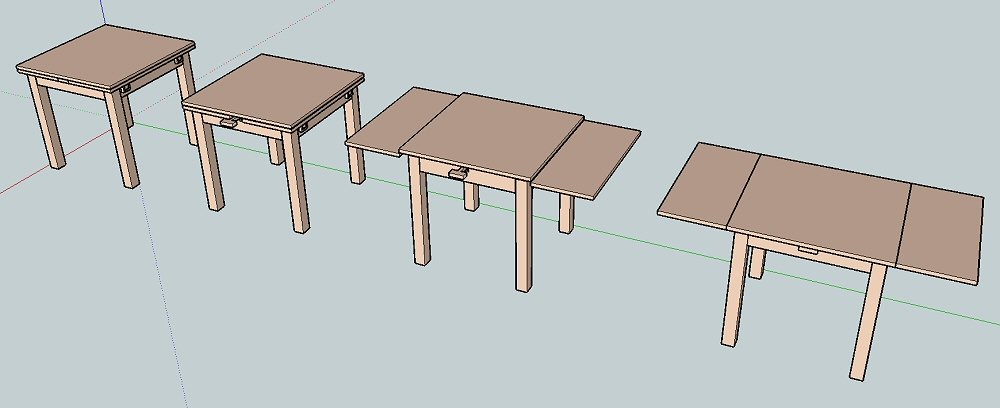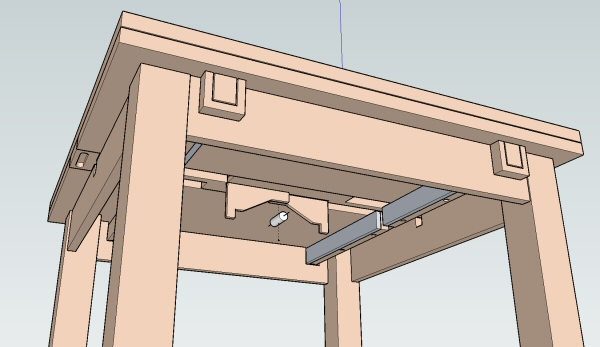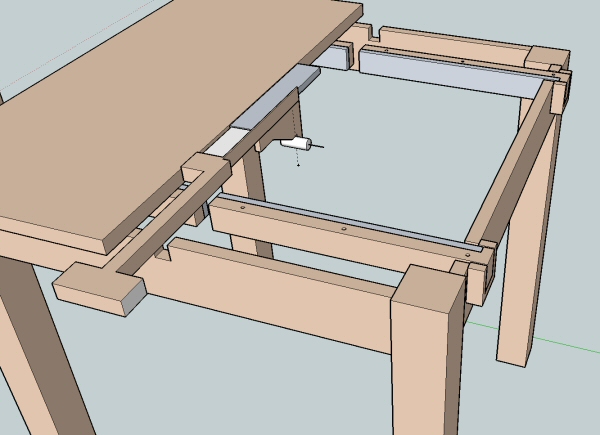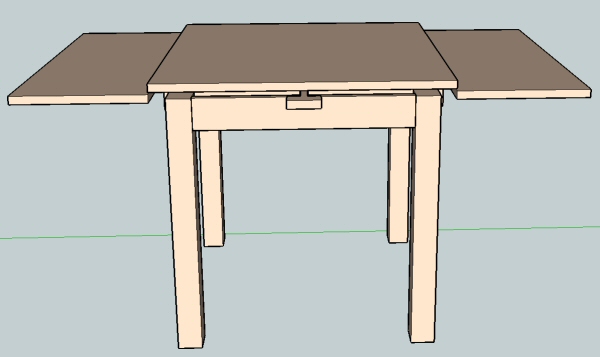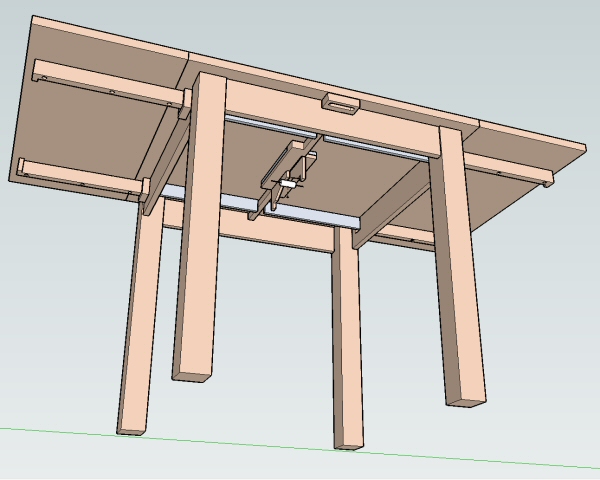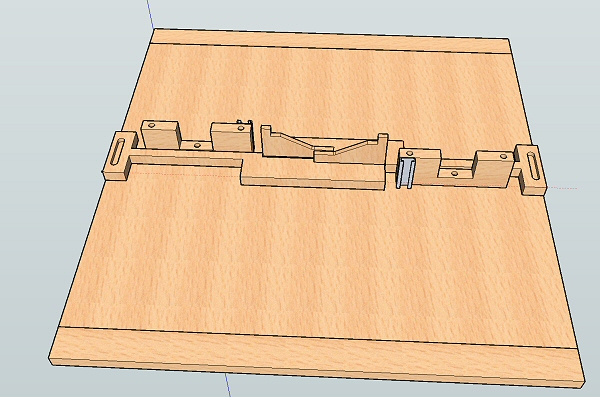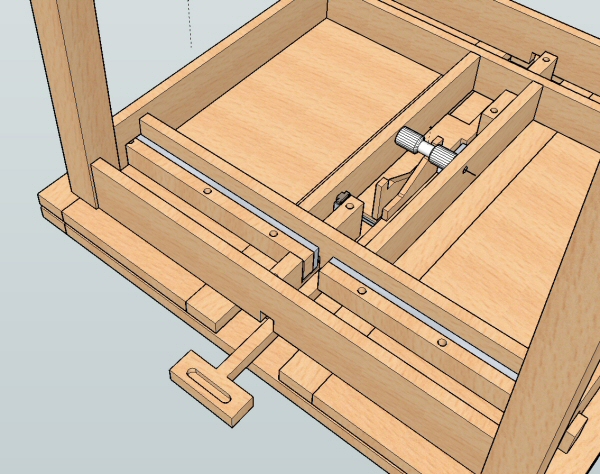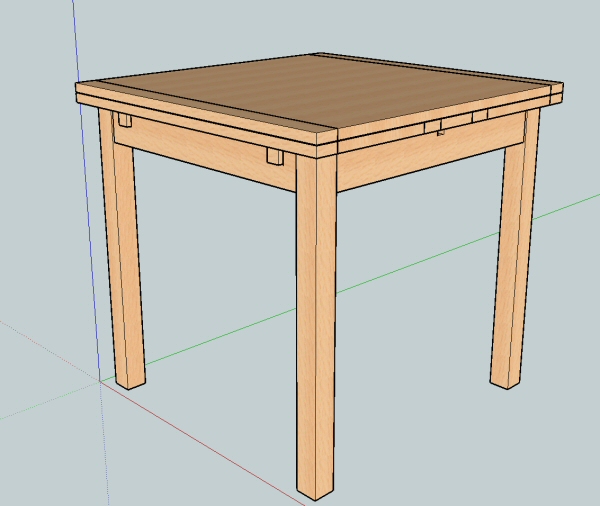RobertMP
Established Member
There seem to be lots of other things that have to be done before I can get to make anything for my comp entry so no WIP thread from me for a while. I need to get the basic idea for the mechanism sorted before I can progress with the rest of the design. thought a design in progress thread would at least get me moving.
The pictures below are just to show the principle I was thinking of. Exactly how I make it work I haven't settled on yet and I welcome any comments
I've spent some time wandering round furniture shops and even visited the grand design exhibition looking at how extending tables work. The one common factor I found is that most solutions (if you want a large amount of extension) are pretty ugly.
So I started thinking about finding my own way of doing it. What I've come up with I have not seen anywhere but doubt it is original
Anyway the idea...
Ignore the aesthetics/proportions for now as that will change. The closed position -
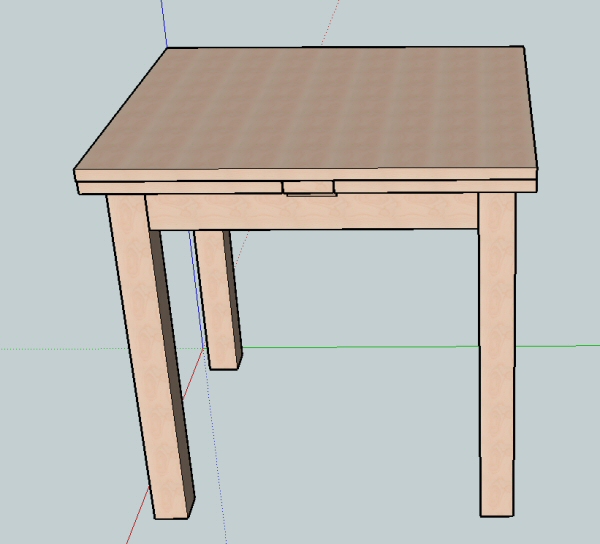
The table top is secured only in the middle to the frame/legs. pulling out the middle 'spacer' underneath raises the top by say 10mm. method of achieving rise and fall to be decided
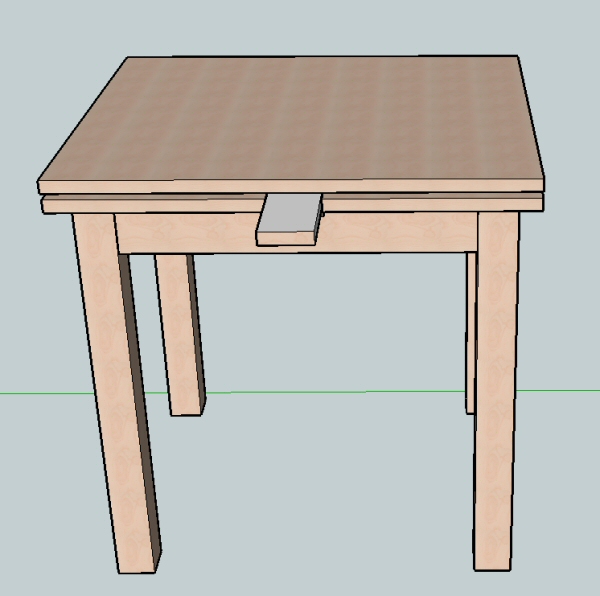
The extensions now slide out on some kind of drawer runner.
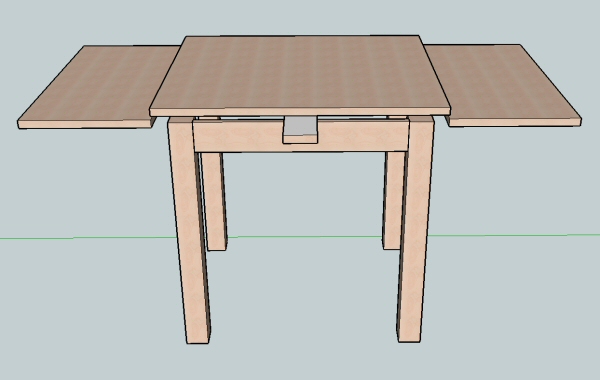
Pushing the 'spacer' back in lowers the top down between the extensions
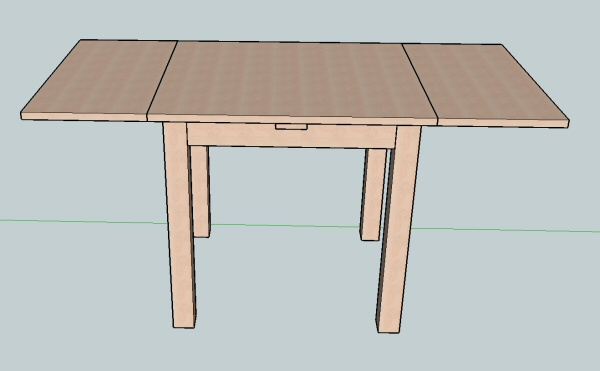
What I don't like about designs I have seen is the gaping holes left when the table is extended or ugly hinges on folding designs... and this avoids that. If I can make it work is another matter!
Anyway thoughts?
The pictures below are just to show the principle I was thinking of. Exactly how I make it work I haven't settled on yet and I welcome any comments
I've spent some time wandering round furniture shops and even visited the grand design exhibition looking at how extending tables work. The one common factor I found is that most solutions (if you want a large amount of extension) are pretty ugly.
So I started thinking about finding my own way of doing it. What I've come up with I have not seen anywhere but doubt it is original
Anyway the idea...
Ignore the aesthetics/proportions for now as that will change. The closed position -

The table top is secured only in the middle to the frame/legs. pulling out the middle 'spacer' underneath raises the top by say 10mm. method of achieving rise and fall to be decided

The extensions now slide out on some kind of drawer runner.

Pushing the 'spacer' back in lowers the top down between the extensions

What I don't like about designs I have seen is the gaping holes left when the table is extended or ugly hinges on folding designs... and this avoids that. If I can make it work is another matter!
Anyway thoughts?





